NR 326 MENTAL HESI 4_2020 | NR326 MENTAL HESI 4_Graded A
Document Content and Description Below
NR 326 MENTAL HESI 4 - 2020 1. A woman admitted to the Emergency Department is bleeding profusely from a patch where hair was lost from her scalp. She is accompanied by her husband who tells the nu... rse that his wife caught her hair on the railing and pulled it out when she fell down the stairs. The husband is solicitous of his wife and quickly answers questions on her behalf. He attempts to comfort his wife by saying to her, "I am right here with you, dear. Nothing can keep us apart." What is the priority nursing intervention? A. Notify the local police of a suspected spousal abuse situation. B. Ask the hospital security to remove the husband from the treatment room. C. Reassure the husband that his wife will be treated well while he is in the waiting area. D. Require the husband to leave the cubicle while the client is being treated. This client should be questioned about the possibility of spousal abuse and cannot answer truthfully in the presence of the perpetrator, so separating the couple is a priority, and (D) is the best method of providing this separation. (A) is not the priority at this time, and permission to notify the police should be obtained from the client. (B) is premature. Abusive husbands are unlikely to respond to manipulation (C) and are also unlikely to leave based on reassurances alone. 2. While assessing a 70-year-old male client, a nurse working in the outpatient clinic notices bruises on the client's chest. The client admits that his daughter, who is his caregiver, becomes frustrated and sometimes hits him. What is the priority outcome for the elderly client who sustained the abuse? A. Verbalizes an acceptance of health status. B. Expresses his feelings of satisfaction with care. C. States that the frequency of abuse has decreased.D. Describes the potential danger of his situation. Abuse cessation should result in the client feeling satisfied with his care (B). (A) is not identified as an issue. Total abuse cessation is the goal, not (C). (D) is of lesser importance than satisfaction with care. 3. The nurse is assessing a client who is believed to have a borderline personality disorder. Which question is most important to include in this assessment? A. At what age did you begin to exhibit symptoms? B. Do you have a family history of borderline disorder? C. How often do you drink alcoholic beverages? D. Do you frequently have temper tantrums? Those with a borderline personality disorder demonstrate intense outbursts of anger, so (D) is the most important question to ask. (A, B, and C) provide worthwhile information, but do not have the priority of (D) when assessing a client who is suspected of having a borderline personality disorder. 4. A nurse is teaching a female client who is in a homosexual relationship about women's health. Which topic is the most important for the nurse to address? A. Sexually transmitted diseases. B. Annual gynecologic examination. C. Monthly breast self-examination. D. Domestic violence interventions. Since all women, regardless of sexual orientation, are at risk for domestic violence that can be potentially lethal, this is the most important topic for the nurse to address (D). Although (A) can be transferred by skin contact or bodily fluids, they are not immediately life threatening. All women, including those involved in same sexrelationships, should receive a screening gynecologic examination (B). Homosexual women have the same risk for breast cancer (C) as heterosexual women. 5. A client who abuses alcohol says to the nurse, I am glad I went in for treatment. Now my problems with alcohol are all behind me. Which response is best for the nurse to provide? A. Yes, the treatment program you attended has an excellent success profile. B. Can you tell me more about what you mean when you say that your problems with alcohol are now behind you? C. You are likely to have a difficult time staying sober if you think that your problems with alcohol are behind you. D. Do you know what 'one day at a time' means for those who have problems with alcohol? Those who attend alcohol treatment programs and Alcoholics Anonymous never put drinking problems behind them and describe alcoholics as only one step away from a slip with maintaining sobriety. The nurse should use reflection and encourage the client to further describe the feelings (B). (A) avoids dealing with the client's misperception. (C) is threatening, and (D) could be interpreted as condescending. 6. A male client who is on the liver transplant list is called to the unit for a possible transplant. When learning that the donor organ is no longer available, the client slams doors and shouts vulgarities about his situation. What action should the nurse implement first? A. Encourage him to share his feelings more appropriately. B. Express concern over his disappointment. C. Arrange to have a clergy person visit. D. Administer a PRN prescription for an antianxiety drug. Addressing the client's disappointment (B) enables the client to express feelings of frustration in a safe environment. (A) is dismissive, non-supportive, and could incite defensiveness. (C) may be indicated after other interventions are implemented. (D)should be a last resort because clients with liver failure have difficulty metabolizing medications. 7. A client is told that her infant will be stillborn. What is the most important action for the nurse to implement after the birth? A. Ask the family if they would like to see and hold the infant after birth. B. Inquire if the parents want a picture taken after the infant is born. C. Discuss with the parents which funeral home should be notified. D. Find out if the client has a special outfit for the infant after the birth. Interventions and support from the nursing staff during a prenatal loss are extremely important in the grief process and healing of the parents. Research had shown it is most helpful for a mother and father to see and hold their deceased infant after delivery, so the parents should be given this opportunity initially after birth (A). (B, C, and D) should be done after determining the parents' wishes and providing the opportunity for bonding and closure with their infant. 8. A client who has a miscarriage at 10-weeks gestation tells the nurse that she already purchased some baby things and picked out a name. After the surgical dilation and curettage (D&C), the client wants to go home as soon as possible. Based on the client's statements, which action should the nurse implement? A. Ready the client for discharge. B. Notify pastoral care to offer the client a blessing. C. Ask the client what name she had picked out for the infant. D. Inquire if the client would like to see what was obtained from her D&C. The client's cues about her preparation for the baby indicate her need to express her feelings of loss, so encouraging further discussion about the infant's name (C) provides an opportunity to offer support. (A) should be implemented upon direction of the healthcare provider. Although it may be therapeutic to offer religious support (B), theclient should first be allowed to ventilate her feelings. (D) may be traumatic for the client. 9. Which nursing intervention should the nurse implement with parents who experience a fetal demise and express the wish not to see the baby? A. Tell them there is nothing to fear. B. Insist that they hold infant so they can grieve. C. Respect their wishes and release the body to the morgue. D. Keep the body available for a few hours in case they change their minds. Grieving parents should be encouraged to hold their infant after death to facilitate closure. If parents are hesitant about seeing or holding their dead infant, the fetus should be available for a few hours (D) in the event they change their mind after the initial shock. (A) is non-supportive. (B) imposes the nurse's opinion and does not allow for individual expressions of grief. (C) does not provide a ready opportunity for the parents to hold the infant if they change their minds later. 10. A client actively involved in substance addiction therapy frequently relapses into benzodiazepines and alcohol use. The client tells the nurse, I don't think I will ever be able to kick this habit. How should the nurse respond? A. The goal of the individual is one of growth, health, autonomy, and selfactualization. B. All people have the right to an equal opportunity for adequate health care. C. Dependence on an extensive support system is needed to overcome any addiction. D. The client must participate in making decisions about his/her own physical and mental health. The client has the right to self-determination and the responsibility to make a decision to pursue health or illness, so the client must actively participate (D). (A, B, and C) are components in addiction recovery, but do not indicate the client's responsibility and primary commitment for decision-making about his/her health [Show More]
Last updated: 1 year ago
Preview 1 out of 26 pages

Buy this document to get the full access instantly
Instant Download Access after purchase
Add to cartInstant download
We Accept:

Reviews( 0 )
$12.50
Document information
Connected school, study & course
About the document
Uploaded On
Mar 20, 2021
Number of pages
26
Written in
Additional information
This document has been written for:
Uploaded
Mar 20, 2021
Downloads
0
Views
50

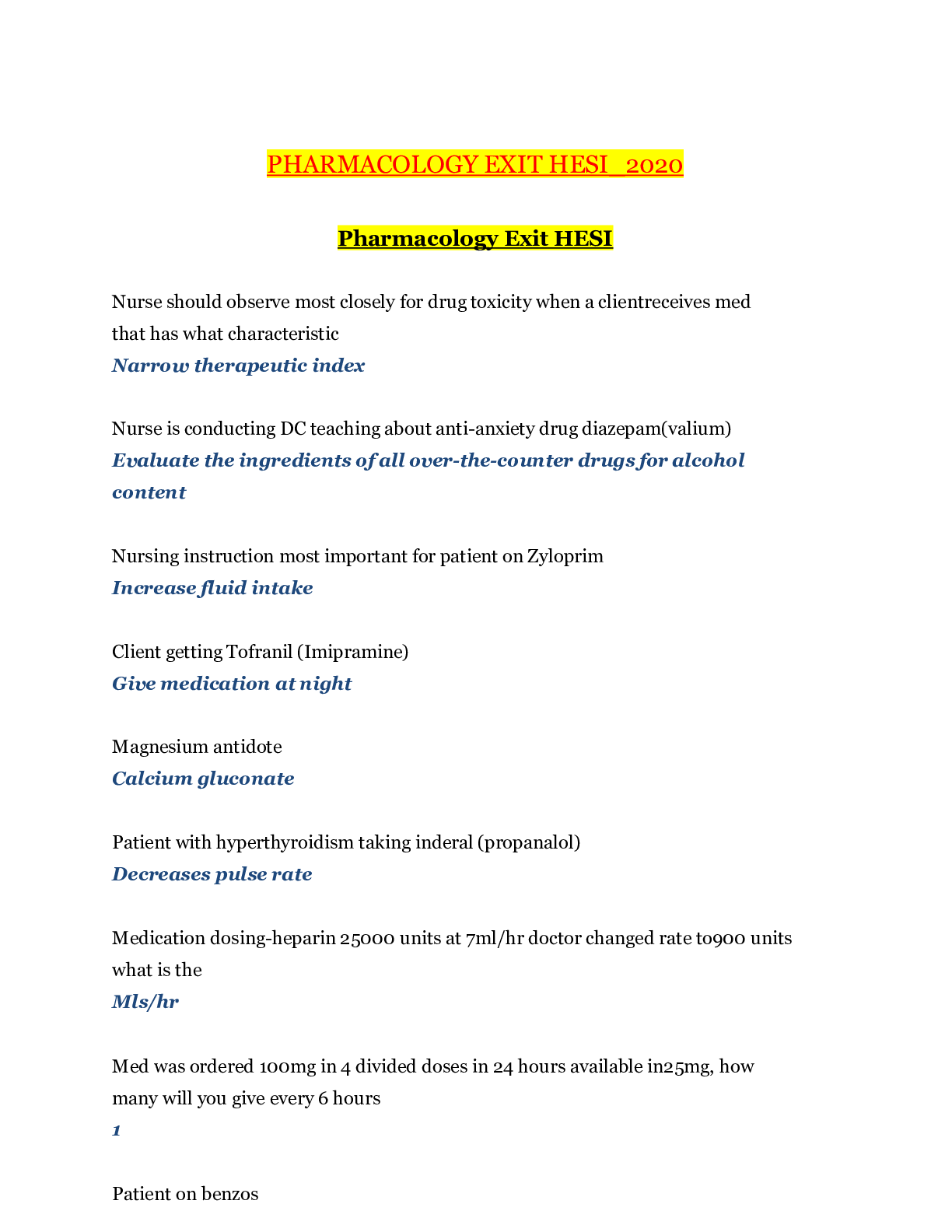
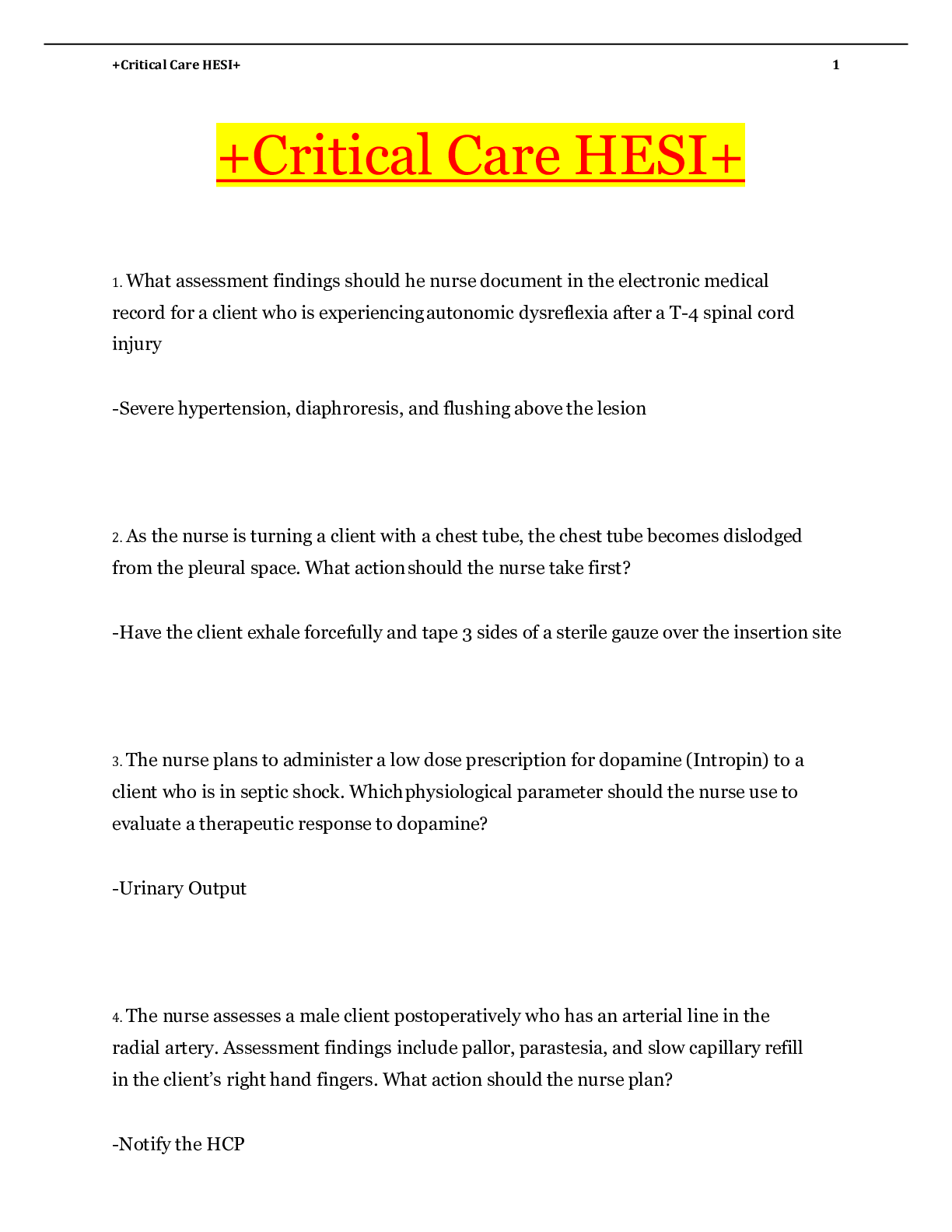


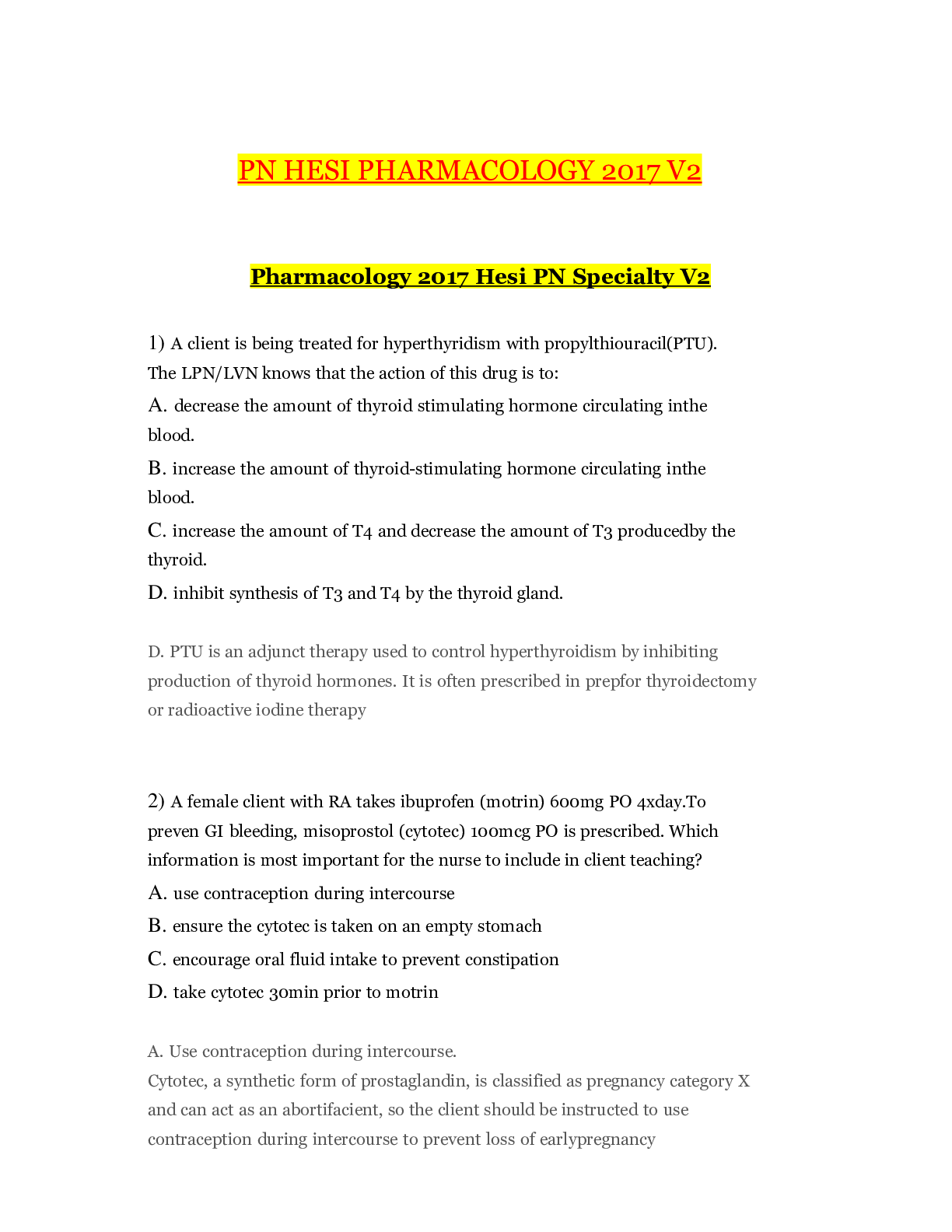
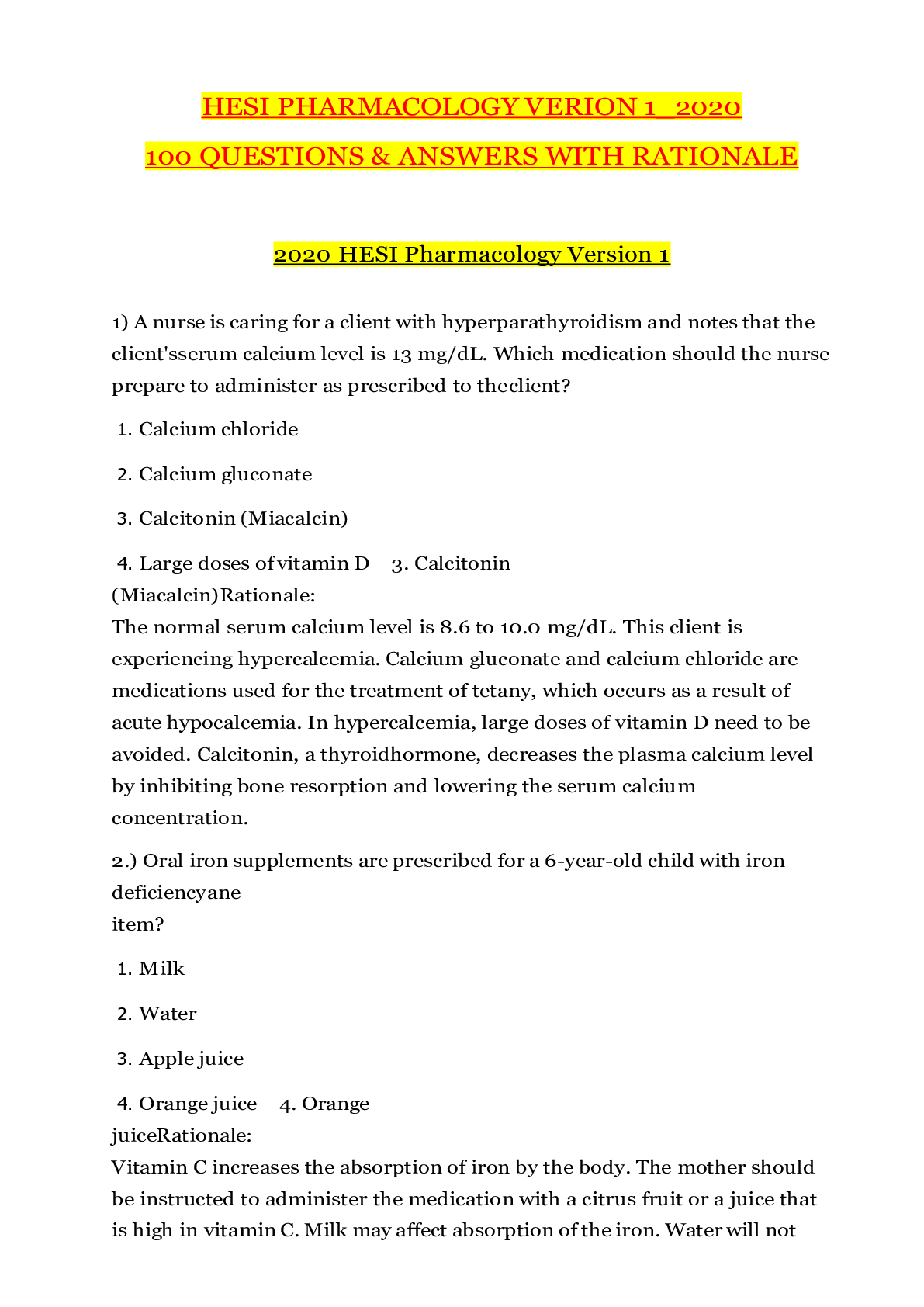







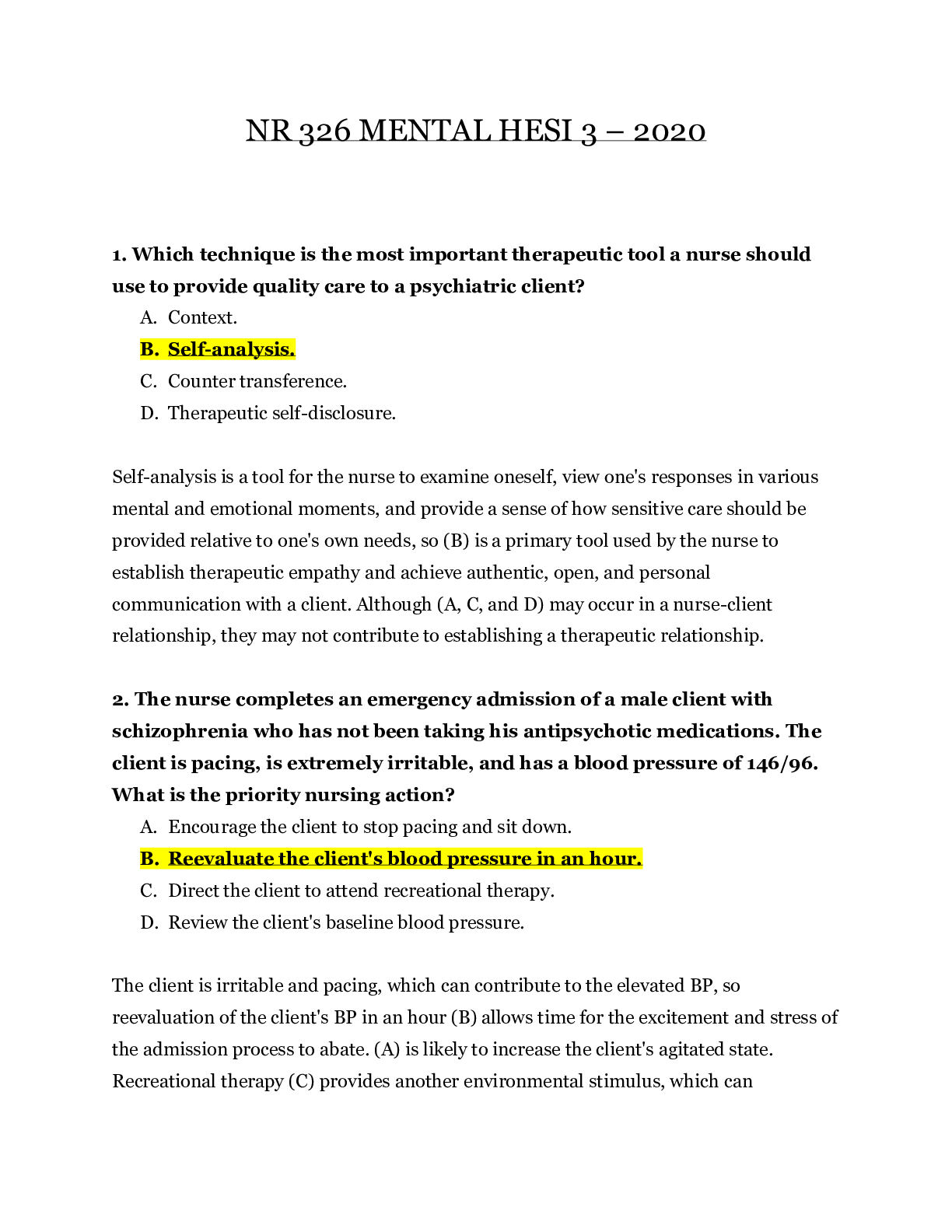

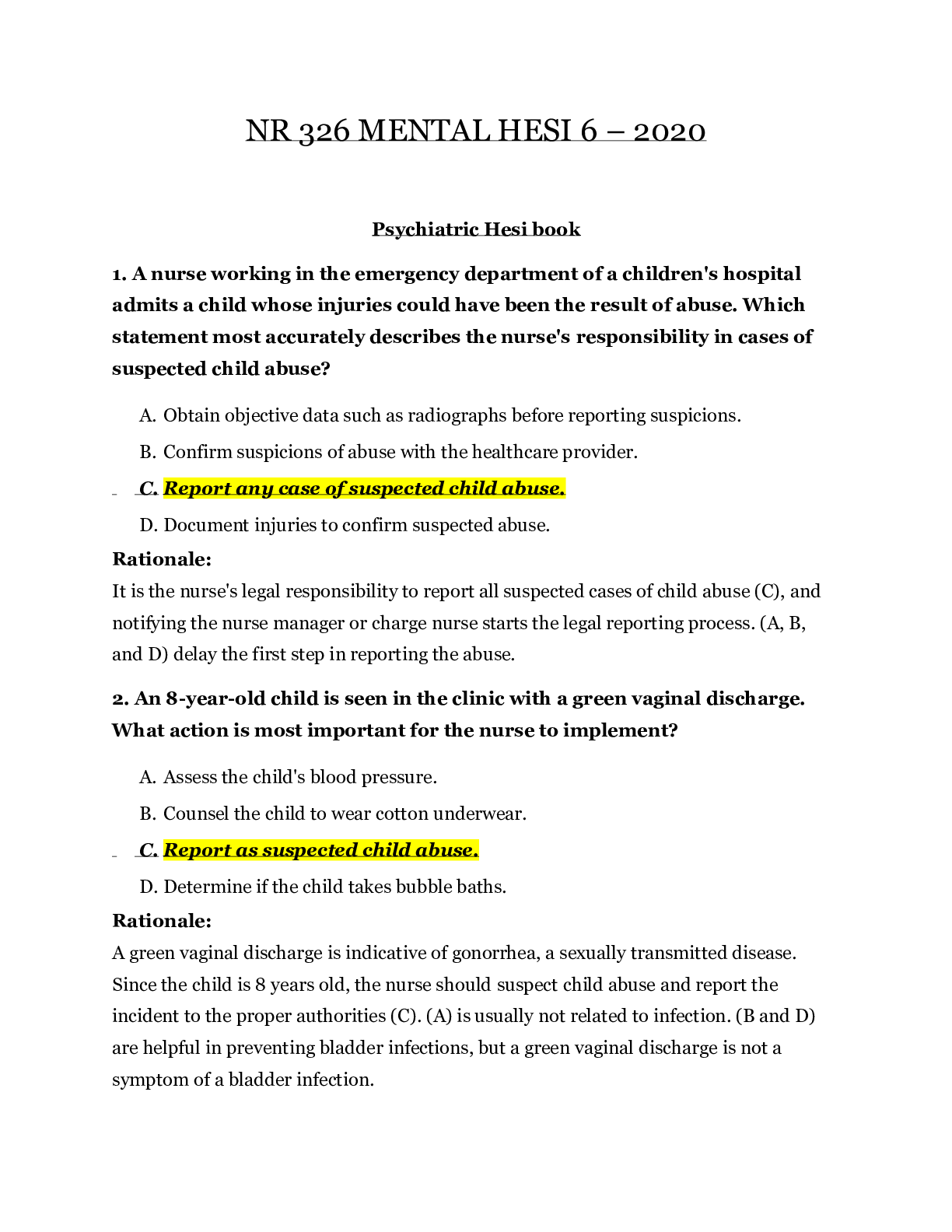

.png)

